Front door step ideas that will ensure a great first impression
The front door step ideas you choose will have a huge impact on the overall kerb appeal of your home and as such deserve some careful thought and attention. Be inspired by our collection of great examples
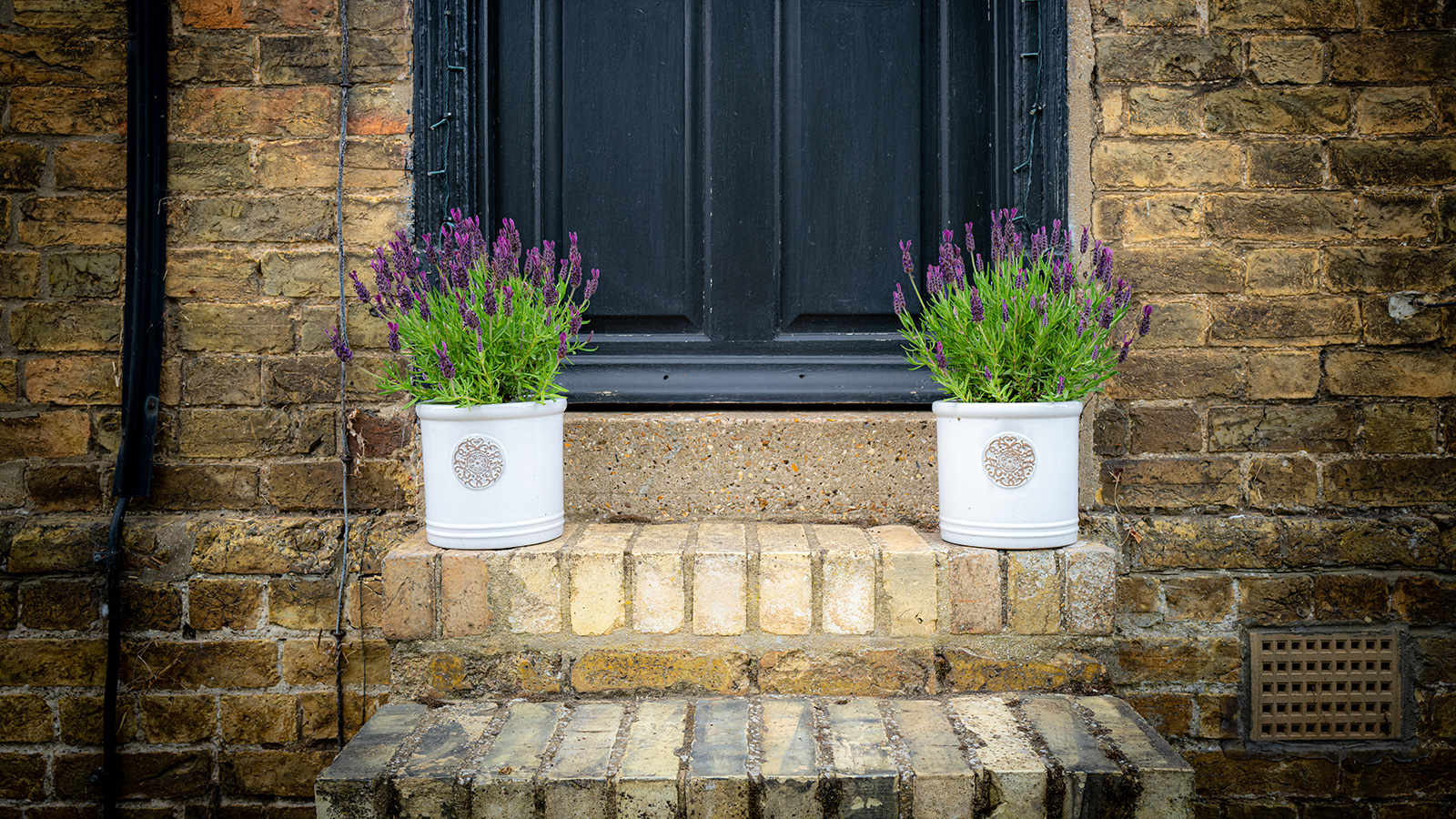
If you haven't given much thought to your front door step ideas before, it may well be time to start giving them some of your attention.
Just as your front door ideas have a massive impact on the overall look of your home and how much kerb appeal it has, so too do the steps that lead to it — the day-to-day usage of this feature means it must be made a key aspect of any house design from the outset.
Not only will the design of the steps impact how you enter the home, but also how other entrance and approach ideas tie together as a whole. Considering the materials, size and style of steps in conjunction with other elements, such as driveway design or porch lighting, will serve you well. Here, we share some of our favourite ideas for getting your steps spot on.
Designing front door step ideas
The façade of your property is made up of many elements, including the materials you use when cladding a house, windows and doors. Then there are the additional elements that all add to the overall look of the frontage – the driveway, front garden, pathways and, of course, your front door steps.
While not every house will require steps up to the front door, in the majority of cases, a front door will not lie flush with the paving or pathway that leads to it, meaning at least one step up will be required.
It is important that the steps not only tie in visually with the rest of your home's façade but also that they are practical – meaning sturdy and durable.
"While a front door step is often a practical solution to entering a house, it doesn't have to just be a practical feature for your home's entrance," says Amy Willis, web editor for homebuilding.co.uk. "You can incorporate a step up into a porch with a flush finish to the brickwork for a subtle look, or perhaps use a set of stone steps to create a grand entrance to your home."
Take all these factors into account when choosing the materials and designs for your steps and you can expect your house to have bags of kerb appeal and really look forward to welcoming guests to your home.
1. Make your front door steps work for you

Above all else, your front door steps need to perform the practical role of taking you effortlessly from your front garden, driveway or garden path, up and in through your front door. That said, with the right design, they can also deliver some other useful tasks, such as offering a place to leave outdoor footwear and so on — even for those limited to fairly small porch ideas.
Here, the step leading to the front door is wide enough to accommodate a welly rack and small stool to sit on while taking muddy footwear off. In addition, it leaves enough space for two herb planters to frame the door. Note too how the paving slabs that finish the step off have been mirrored in the colour of the door.
2. Smarten up a townhouse with black and white steps
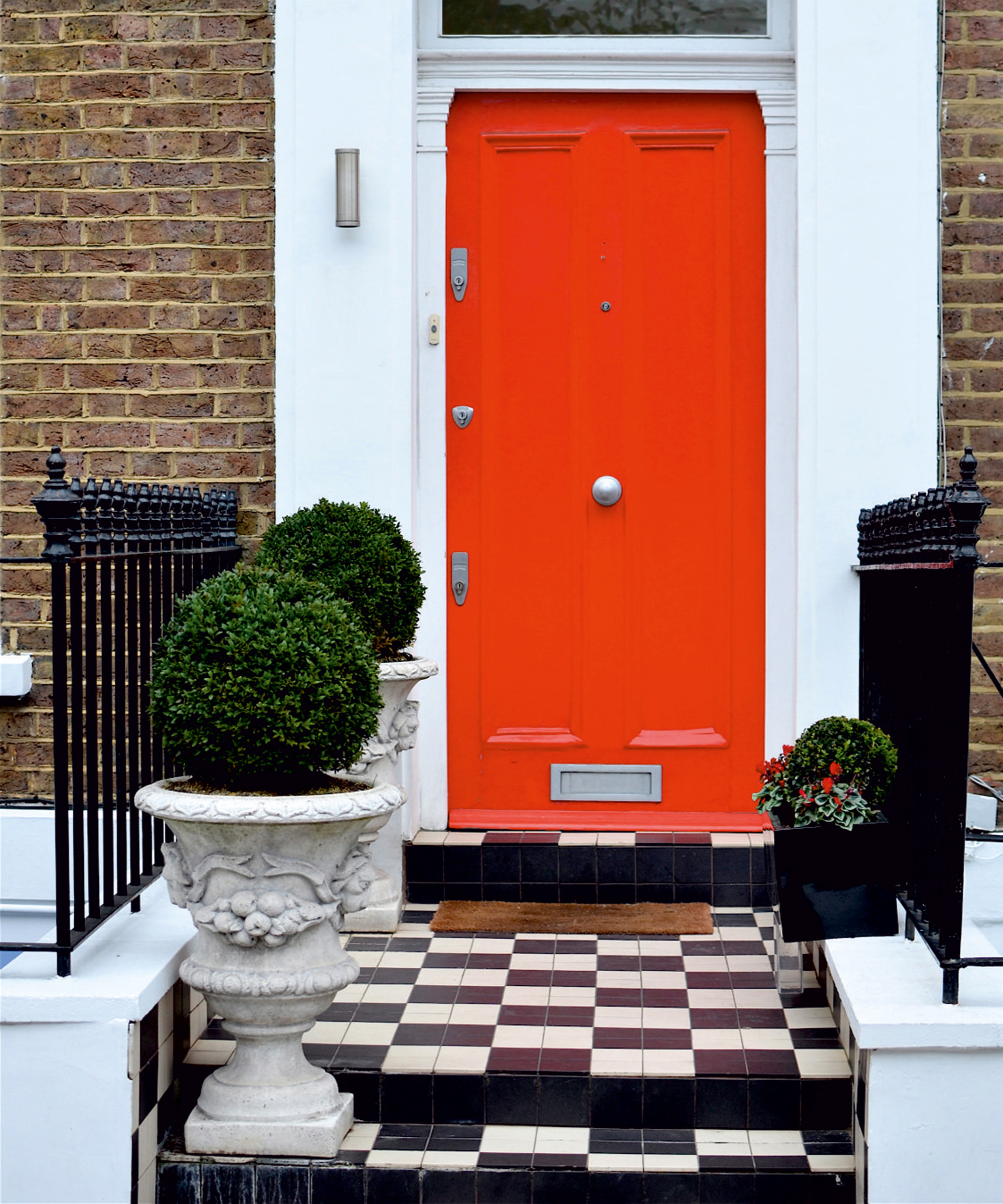
It is important that your choice of front door steps ties in with the style of your house if you want them to enhance its frontage. In the case of brick townhouses, particularly those built in the Victorian era, there is something about black and white chequerboard-style tiles that really seems to work.
Here, the grand entrance, with its smart black railings, bright red front door and impressive door surround, looks perfect combined with steps and a pathway finished in black and white tiles. This is also a great example of how to treat front doors which are set much higher than the approach to the house.
"If the height of your front door is particularly high, why not consider having two sets of steps, spread out with a path between, going towards your entrance to make the look feel more natural," says Amy Willis.
Incidentally, red happens to be one of the best front door colours according to the experts, hinting at confident, upbeat homeowners.

Web editor Amy took a hands-on approach to her renovation project, knocking down walls, restoring oak beams and laying slabs with the help of family members to save costs. She has largely focused on using natural materials, such as limestone, oak and sisal carpet, to put character back into the property that was largely removed during the eighties. The project has extended into the garden too, with the cottage's exterior completely re-landscaped with a digger and a new driveway added. She has dealt with de-listing a property as well as handling land disputes and conveyancing administration.
3. Match materials for a sleek, modern look
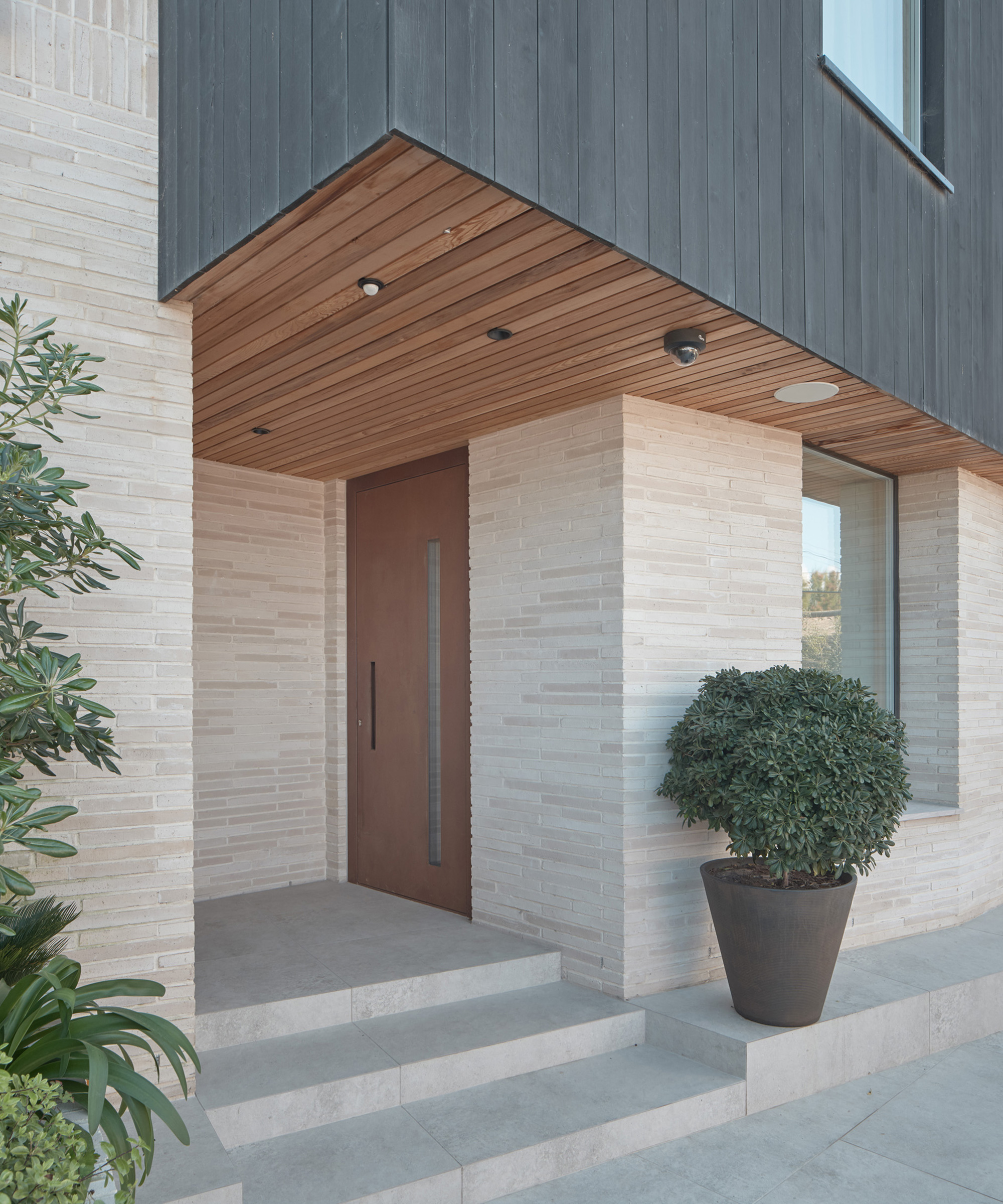
If you have a contemporary home, taking a cohesive approach to the materials you use for your front entrance can work really well, creating a sleek, unfussy finish.
Here, the same stone has been used to clad the lower storey walls, approach and wide steps that lead to the oversized steel front door, from Urban Front. The look is softened by the timber cladding used on the underside of the overhang above the entrance.
4. Use rustic stone for a welcoming approach
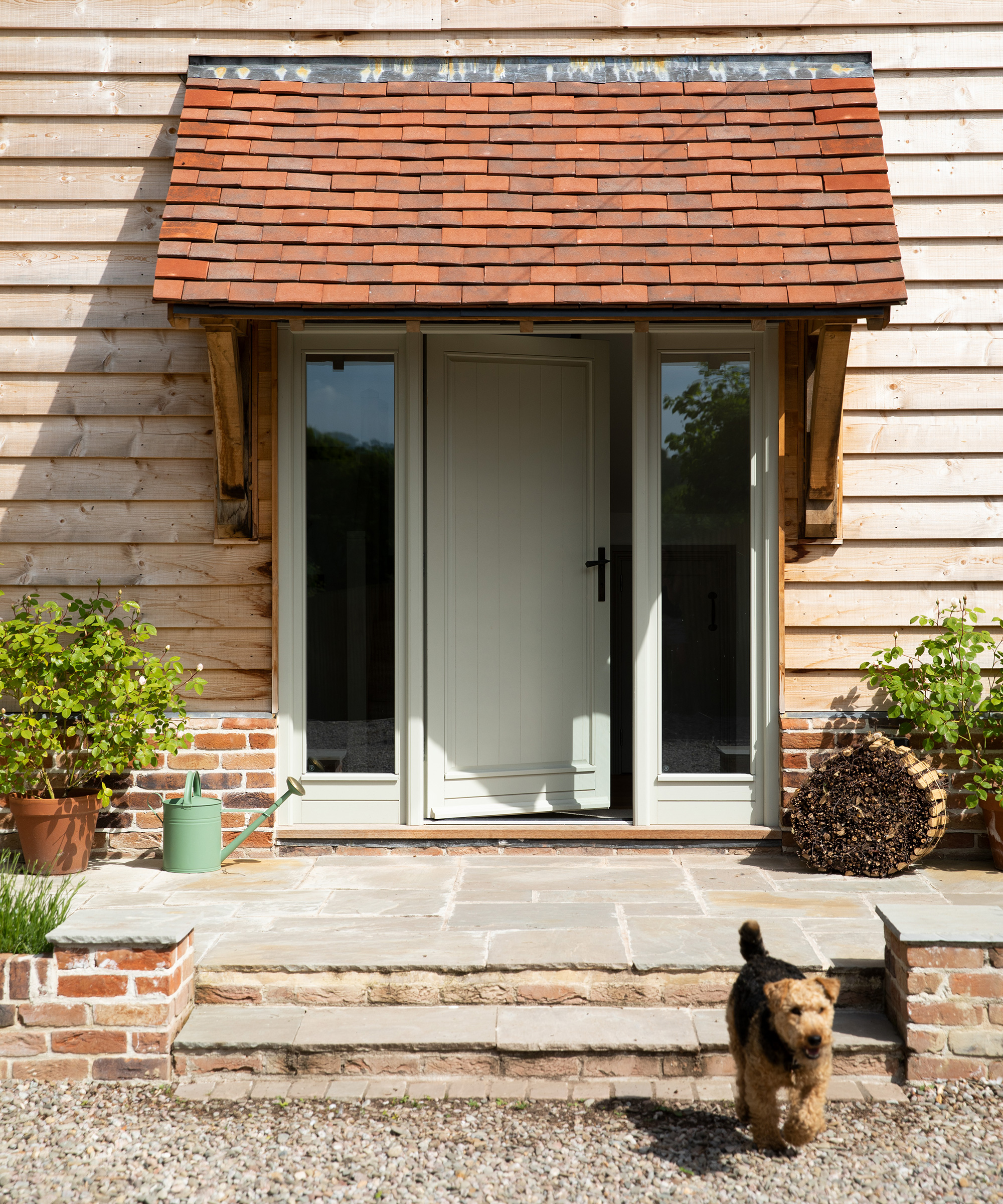
Natural materials and, in particular natural stone, inject an immediate sense of warmth and character to all kinds of homes. Rustic stone paving slabs with uneven edges and a more riven surface look brilliant when used for both garden paving ideas as well as for steps leading to the entrance of a traditional-style oak frame home.
The frontage of this oak frame self build is full of character thanks to the choice of materials, including bare wood cladding, clay roof tiles and, of course, the creamy stone used to finish off the front door steps.
5. Allow your door to shine with subtle steps
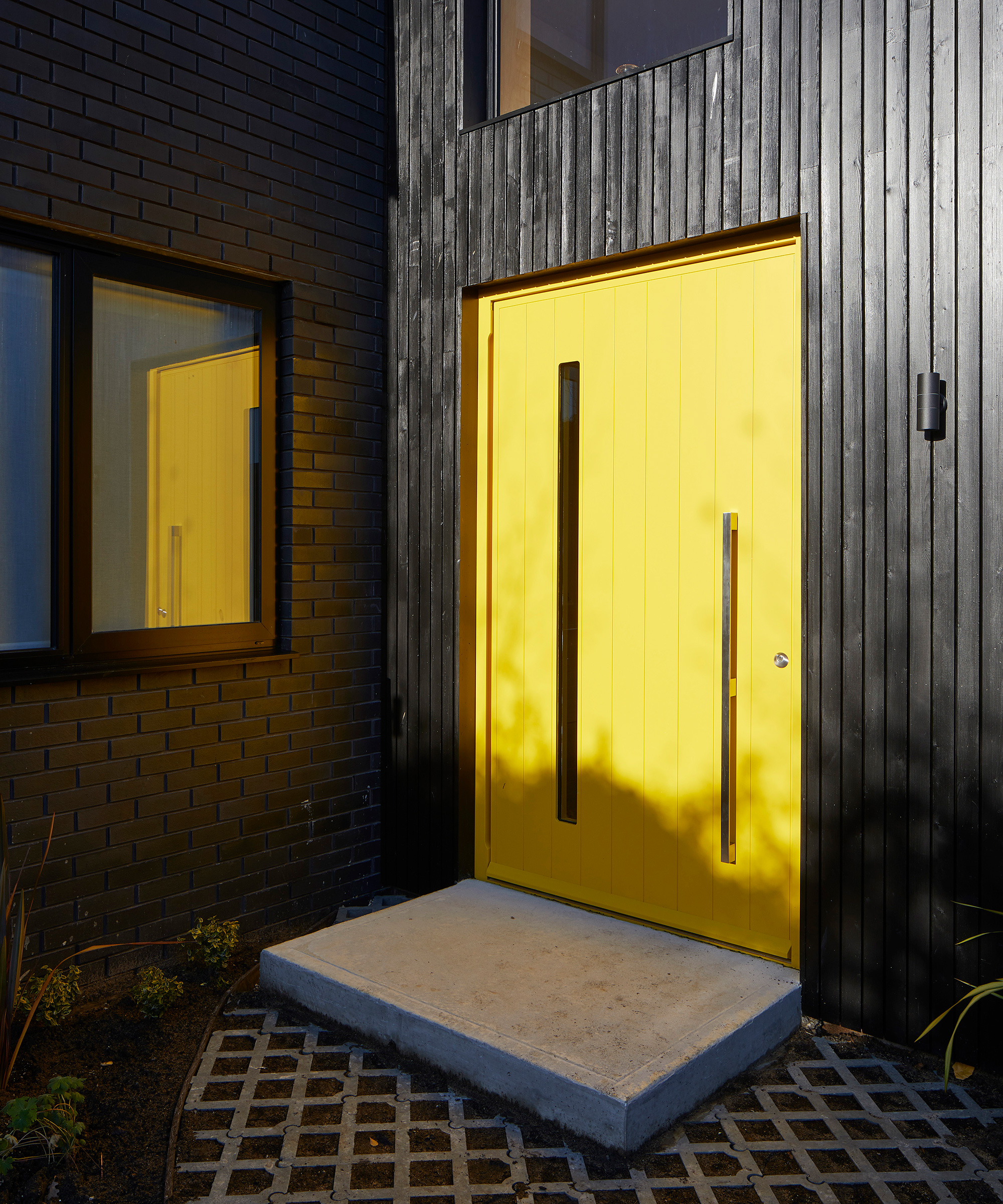
If you want your front door to have maximum impact, perhaps by painting it an eye-popping colour, or maybe by selecting an oversized or pivot door, then it can be a good idea to keep your front door steps a little more subdued in style in order to really let it stand out in all its glory.
In this great example, the zingy yellow front door is a pivot doorset from Urban Front. By partnering it with a single, simple – yet effective – concrete step it really comes into its own.
6. Put a modern spin on Victorian tiled steps

Many older terraced or town house properties featured ornate and heavily detailed tiled steps that welcomed guests from the street. Often featuring eye-catching colours including blue, pink and red, the steps to a home were just an interesting as the rest of the design.
Pay homage to this traditional entrance design by repairing old tiles, or introducing new contemporary patterned tiles.
Retiling with a modern design has rejuvenated this terraced home's exterior, as has painting a front door and brickwork in a contemporary pastel colours. The result is charming, welcoming and grounded in the building's history.
7. Let the home's exterior inform materials
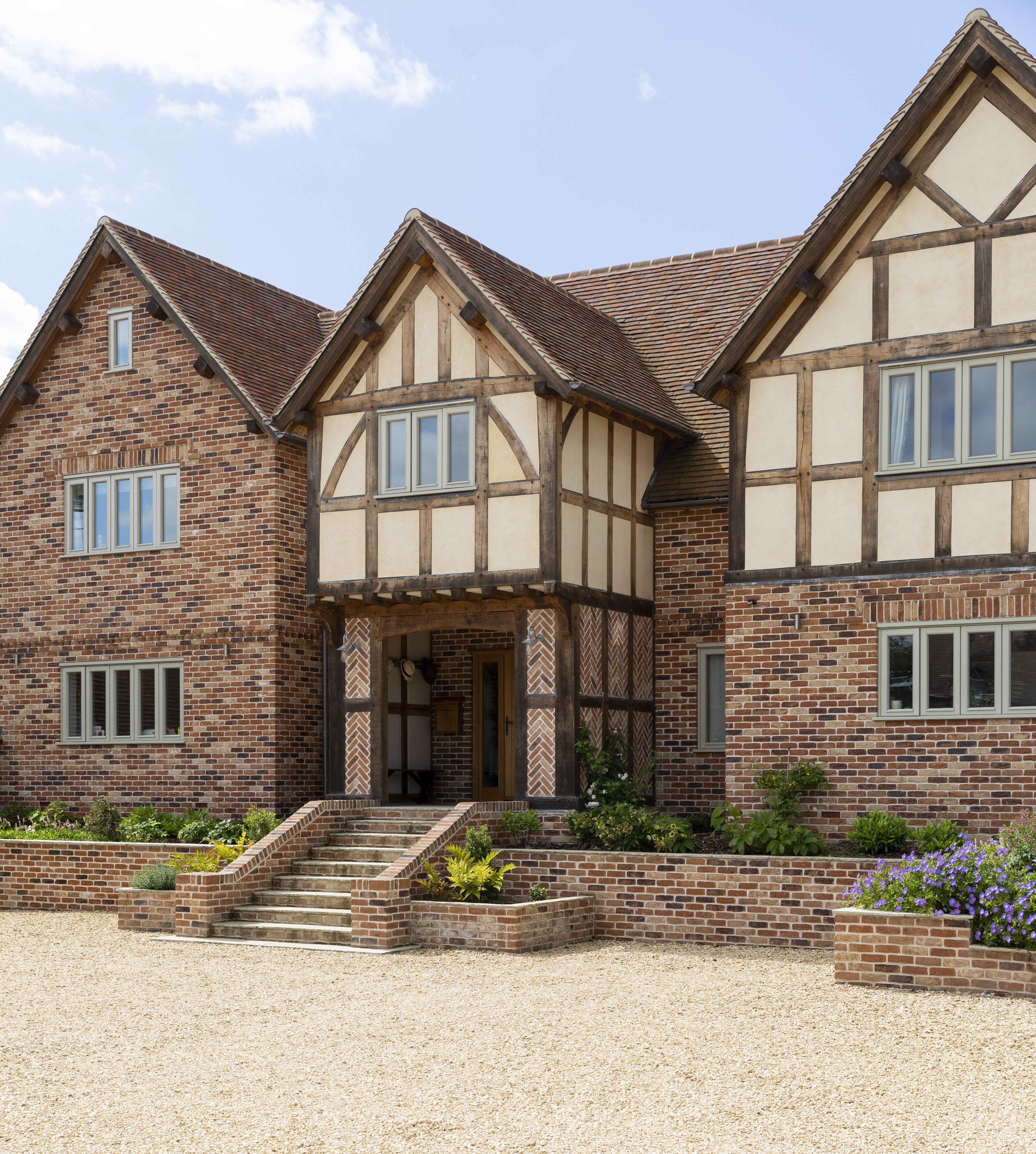
Just as you would an internal space, create a moodboard of materials and colour themes you feel suit your home's exterior design. This will allow you to experiment with contrasts and combinations.
If your home is predominantly clad in brick, this can be a nice chance to showcase the versatility of the material with different laying patterns. Or, if your home will be clad in a warm timber, a stone or other natural, robust material will be a good choice for steps.
Here, a light-coloured stone which captures the cream-colour of the first-floor's render creates the steps, while the red brick of the ground floor has been used to create small sidewall for safety (sometimes a stipulation of Building Regulations).
Finally, the porch ideas utilised bring together all of the elements while providing visitors with a place to shelter from the elements.
8. Illuminate steps to the front door
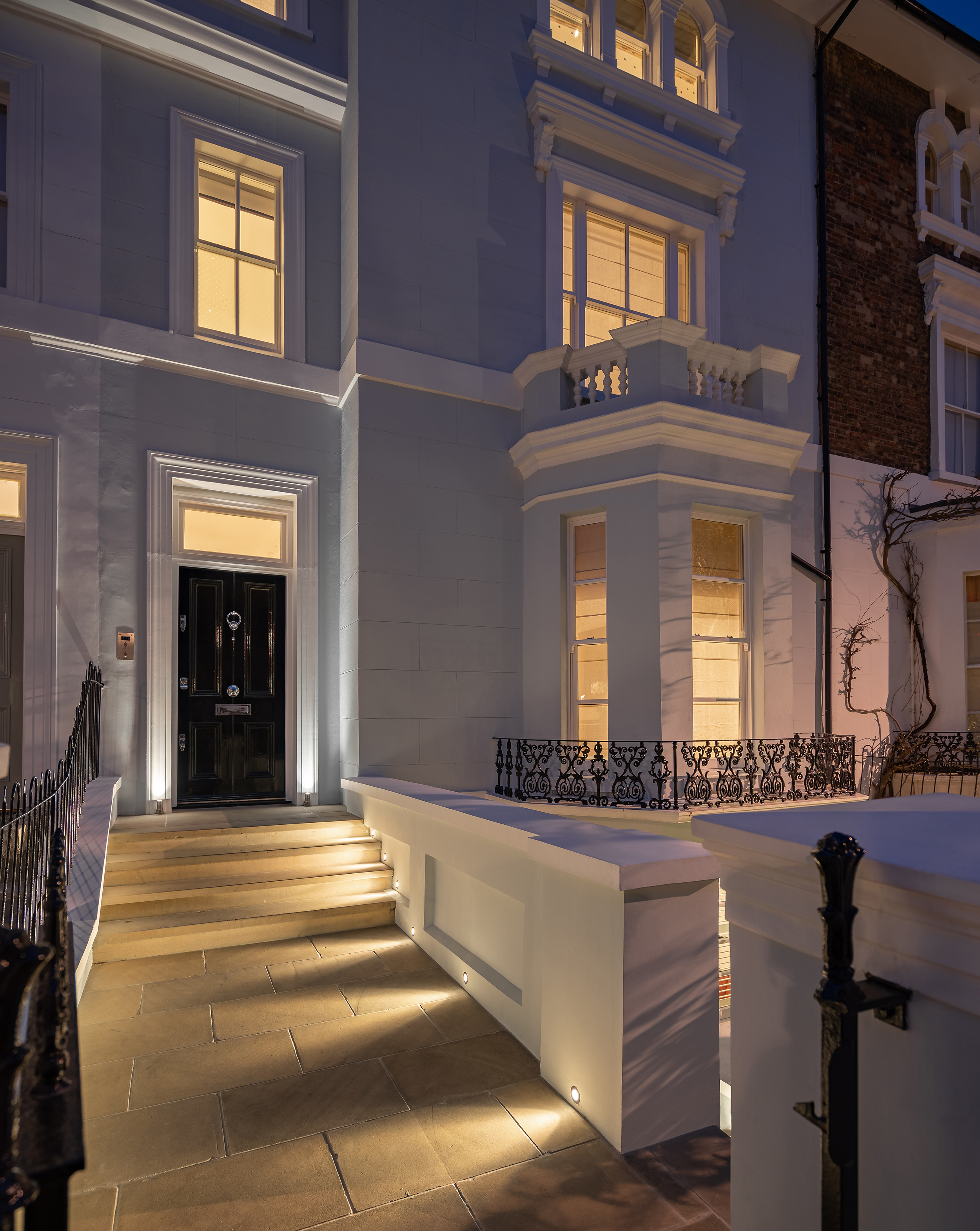
For those with a long approach to entrance from a gate or driveway, consider front garden ideas, landscaping and entry lighting as one scheme.
Extending porch lighting ideas into the garden or pathway will present a uniform and well-considered first impression.
For a pathway and the steps, use low-level light that will illuminate steps for safety, before lighting up the waiting area immediately outside the front door at or above head height.
Motion sensors on the porch will also highlight to those unfamiliar with the layout as to where they are heading, while automatic PIR lighting like this also deters unwanted visitors.
9. Make small front door steps comfortable for users
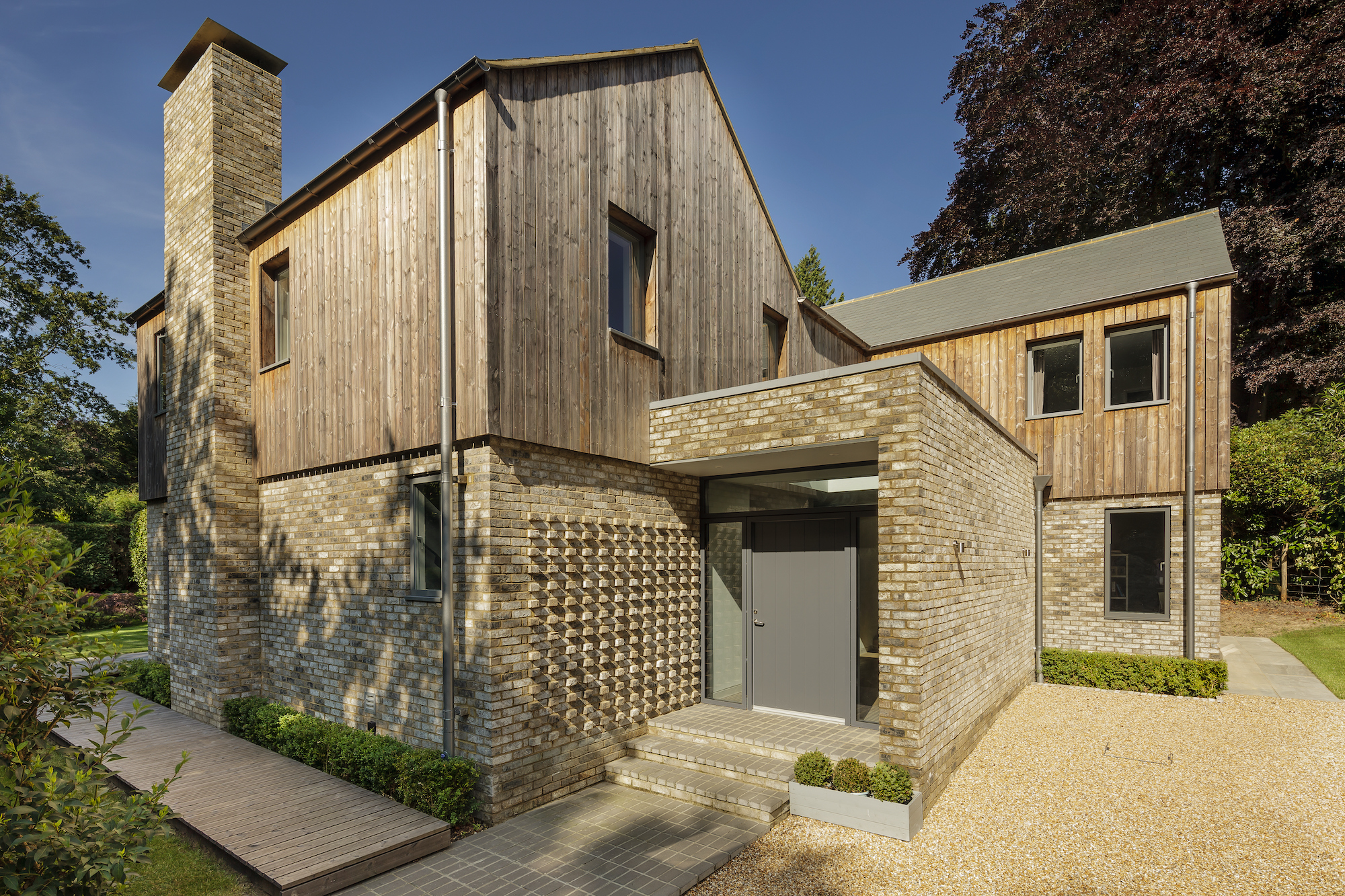
We've all had the experience of going to take a step and finding the riser is too small and falling slightly flat. When designing your front door steps, be sure to take in a visitor's expectation of height and depth.
Comfortable steps should be no less than 10cm in height and should be designed avoid an awkwardly deep or shallow tread.
This home's small steps are built using brick to match the cladding on the ground floor, but tie together the grey of the house and the yellow hue of the gravel driveway. Considering driveway ideas at the same time as the steps has resulted in a united palette of materials and clear path to the door.
10. Enjoy some rustic charm with weathered bricks
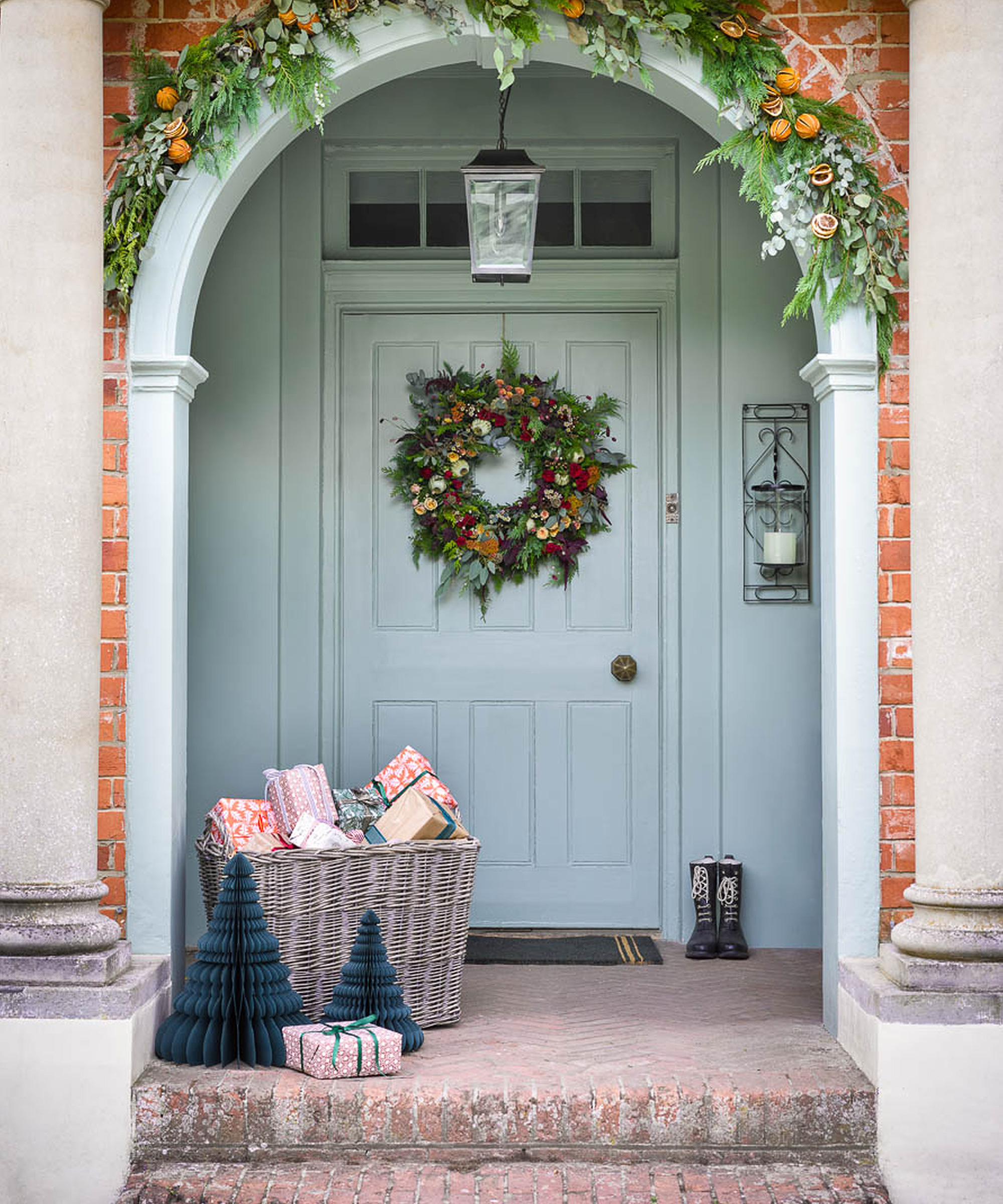
Weathered bricks that look slightly timeworn are perfect for homeowners who want to inject a little rustic charm into their home's frontage. This is an idea that is particularly well-suited to farmhouses and country-style homes — as well as to homeowners keen on the idea of oak frame porches.
Here, the front door is framed by a beautiful covered arched entrance. The characterful brick steps that lead to the period front door were the perfect choice for completing the look.
11. Opt for a ramp for an accessible home
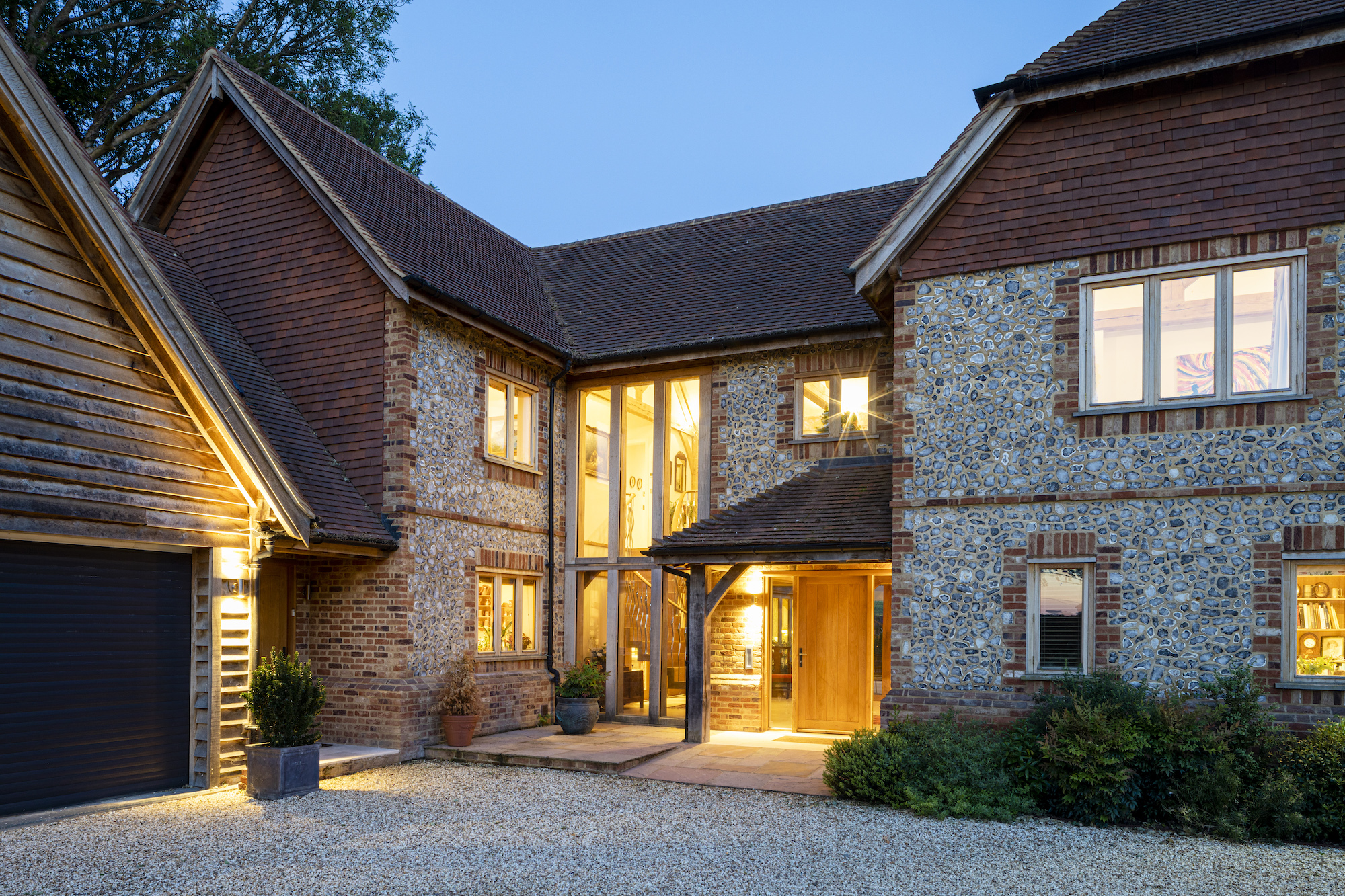
Although front door steps are the norm for homes built on slope, this won't work for many people building lifetime homes.
While it is slightly more tricky to plan a ramp to a front door – in part due to the required length of slope compared with the height of the door – a well planned entrance design can compensate accordingly.
Consider, perhaps, an L or U shaped ramp with a good amount of turning room and definitely measure up the room needed to manoeuvre from the car to the ramp in your plan for driveway ideas.
12. Refresh existing front door steps
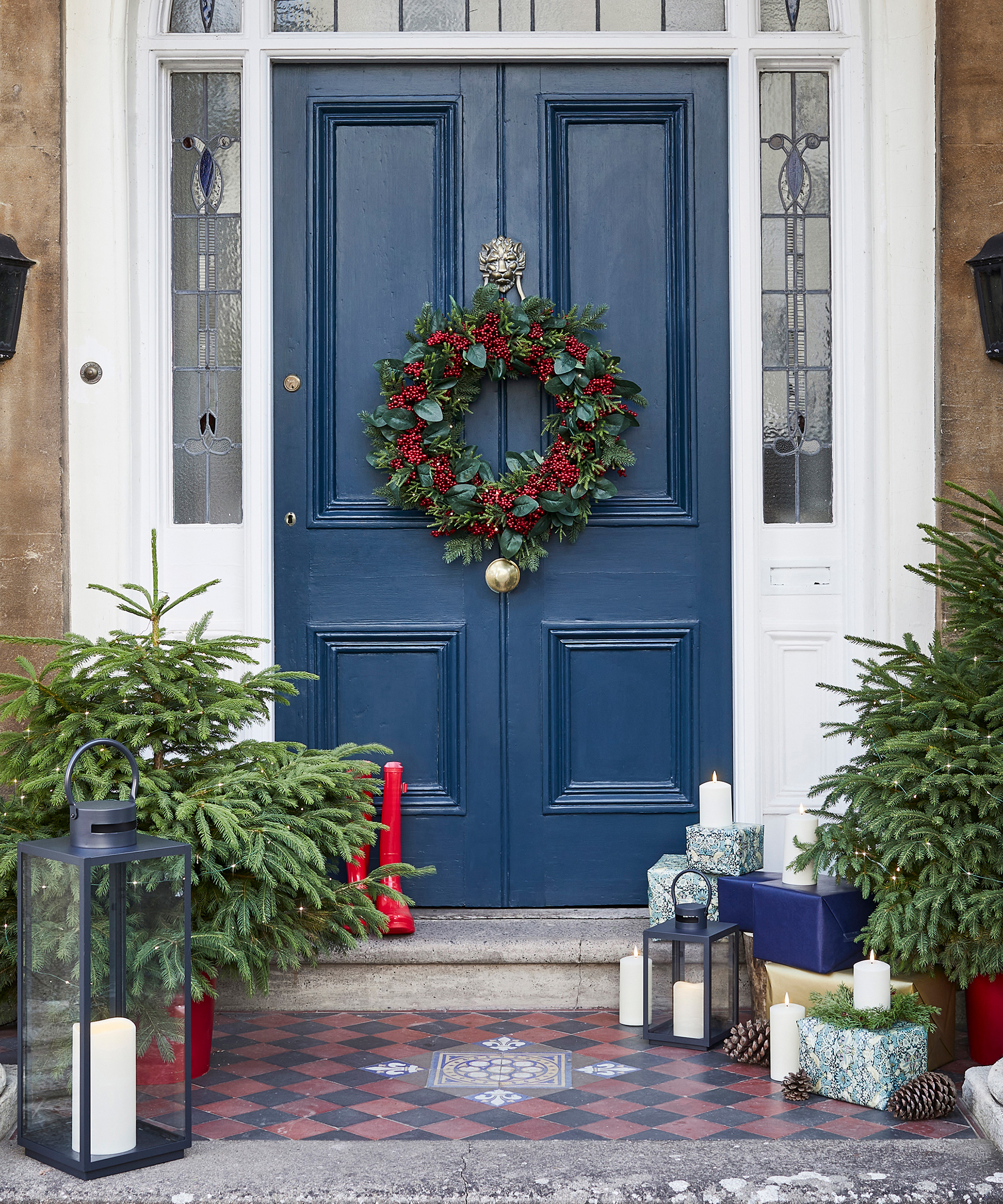
If you're renovating an existing house and don't want to lose the charm of the current steps, there are certainly ways to update and refresh different materials.
Bricks can be tinted or painted to bring them more up to date with contemporary tastes, while flagstones and pavers are easily cleaned by using the best pressure washers available, or simply some soap and water.
Unstable or broken steps can always be removed and re-levelled or replaced in the same style as they originally appeared. Finally, dressing steps with planters and lighting, as shown here, can bring an entrance to life.
What is the best way to clean front door steps?
For your front door steps to do the exterior of your home justice they should remain looking clean. In addition, steps covered in moss, leaves and other debris can become slippery.
"A simple cleaning solution for tile steps is to use hot water and washing up liquid – or floor cleaner for more stubborn dirt," advises DIY expert Steve Jenkins. "Get a mop and apply the solution liberally and leave for 5-10 minutes. Wring out the mop, and mop the tiles. Repeat until clean and leave to dry."
Concrete steps can also easily be cleaned to keep them looking their best.
"A mixture of warm water and bleach goes a long way to refreshing concrete," says Steve. "Use two parts water and one part bleach. First brush the steps and then mop or pour solution onto the steps and get a stiff scrubbing brush to clean. Rinse with warm water and leave to dry. Alternatively use a pressure washer if you have one."
How do you repair cracked concrete steps?
Sometimes, due to fluctuations in temperatures or just wear and tear, concrete front door steps can crack.
"If you have narrow cracks on concrete steps, get a hammer and chisel to widen and remove loose debris either side of the crack," advises Steve. "Brush away the debris and get a wire brush to ensure all debris is removed. Dampen the crack and mix up rapid drying cement and add to the crack with a trowel and smooth out. Spray with a fine mist of water to help get a smooth finish if this is what you are looking for."

Steve Jenkins is a freelance content creator with over two decades of experience working in digital and print and was previously the DIY content editor for Homebuilding & Renovating.
He is a keen DIYer with over 20 years of experience in transforming and renovating the many homes he has lived in. He specialises in painting and decorating, but has a wide range of skills gleaned from working in the building trade for around 10 years and spending time at night school learning how to plaster and plumb.
He has fitted kitchens, tiled bathrooms and kitchens, laid many floors, built partition walls, plastered walls, plumbed in bathrooms, worked on loft conversions and much more.
Alongside your choice of steps leading to your front door – as well as the door itself – there are lots other ways to create kerb appeal. Not only will upping the external appearance of your home give you a boost every time you return home, it could also increase the value of your property and certainly make it more appealing to buyers should you come to sell.
Pay attention in particular to making your front garden ideas the best they can be. You want things to look neat and tidy, so consider bin storage and do take some time to think about your exterior colour palette as a whole — everything from your choice of planting to your cladding and window frame shades should work harmoniously.
Get the Homebuilding & Renovating Newsletter
Bring your dream home to life with expert advice, how to guides and design inspiration. Sign up for our newsletter and get two free tickets to a Homebuilding & Renovating Show near you.
Natasha was Homebuilding & Renovating’s Associate Content Editor and was a member of the Homebuilding team for over two decades. In her role on Homebuilding & Renovating she imparted her knowledge on a wide range of renovation topics, from window condensation to renovating bathrooms, to removing walls and adding an extension. She continues to write for Homebuilding on these topics, and more. An experienced journalist and renovation expert, she also writes for a number of other homes titles, including Homes & Gardens and Ideal Homes. Over the years Natasha has renovated and carried out a side extension to a Victorian terrace. She is currently living in the rural Edwardian cottage she renovated and extended on a largely DIY basis, living on site for the duration of the project.

